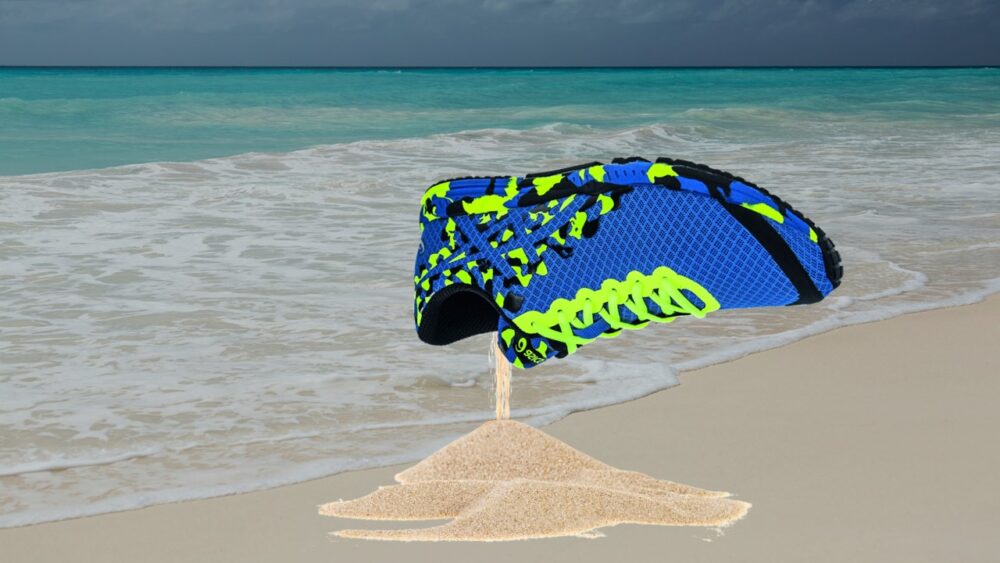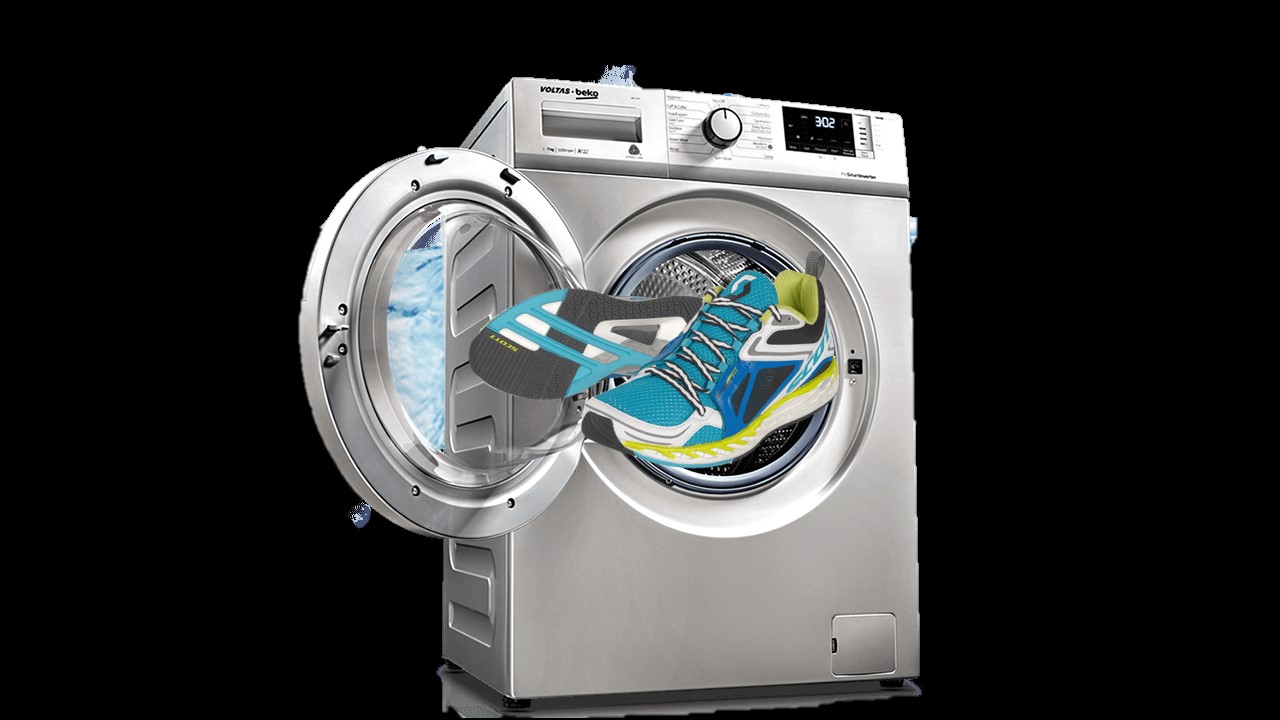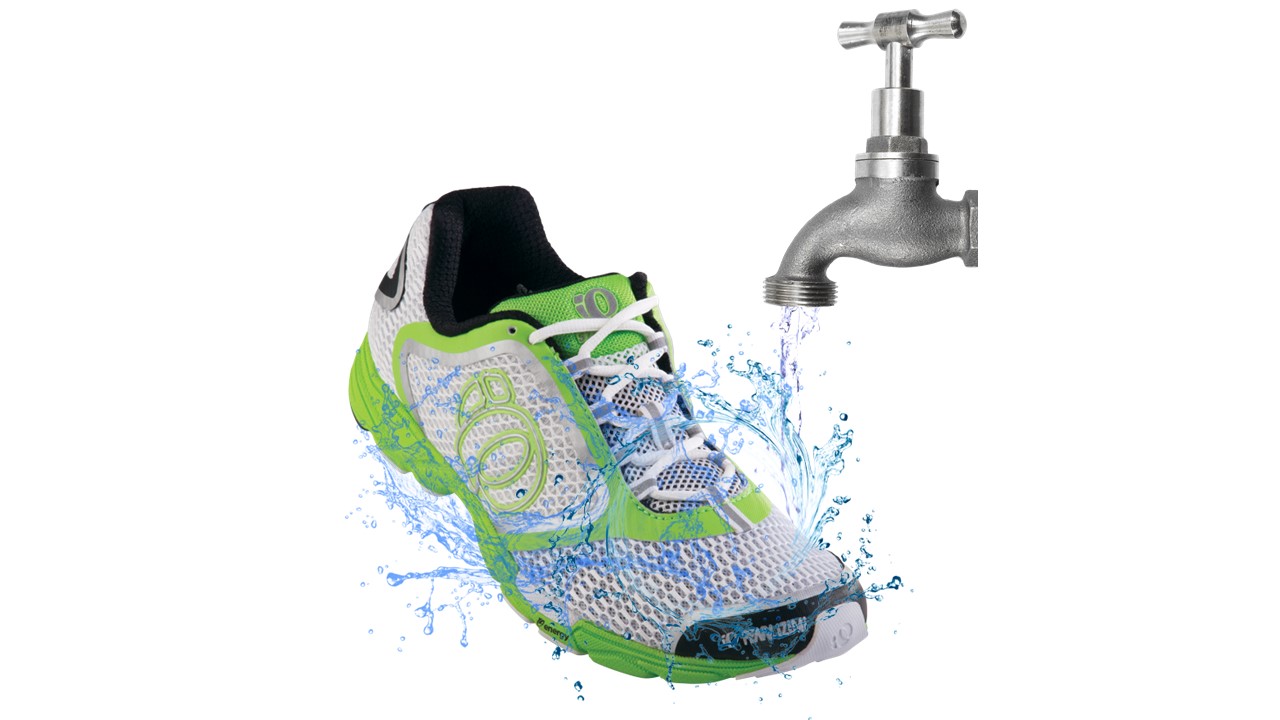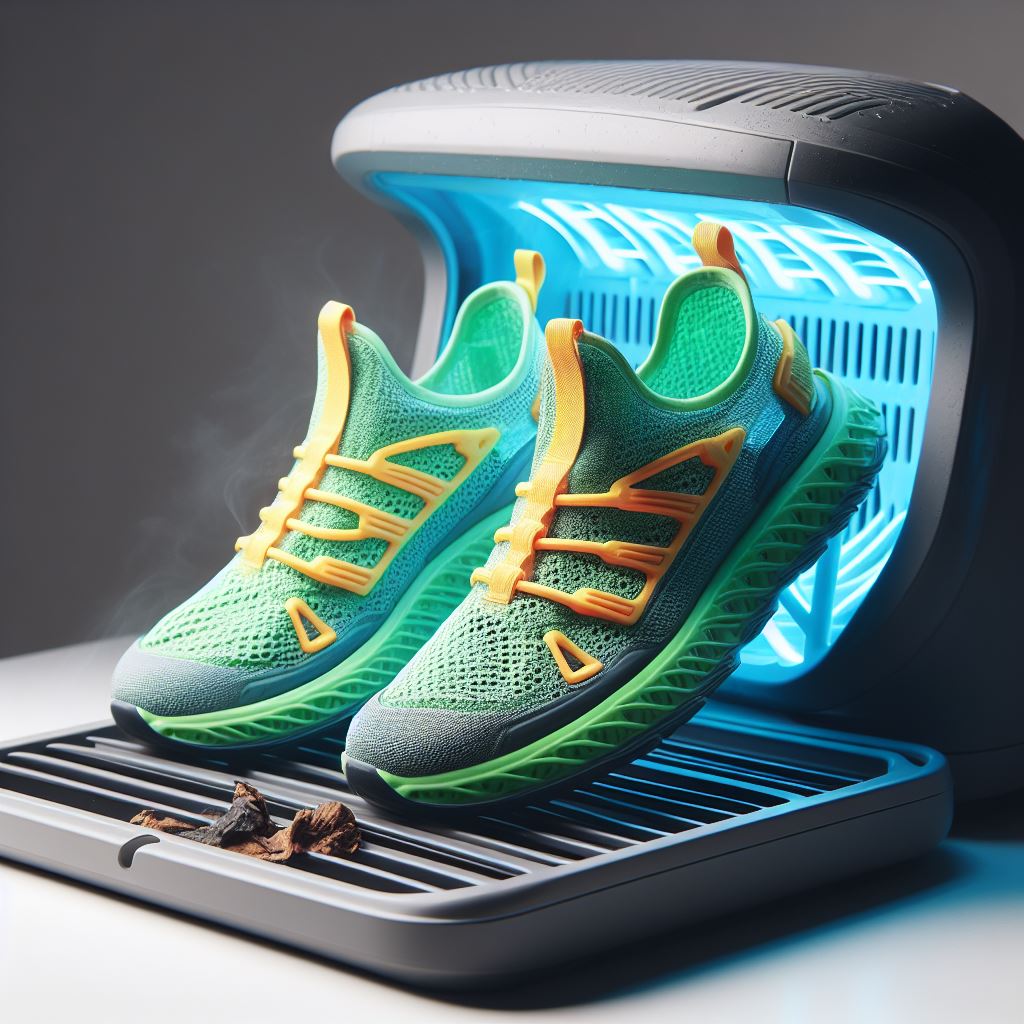How To Dry Water Shoes – The Ultimate Guide
If you’ve ever wondered, “How to dry water shoes?” – you’re not alone. Whether you’ve just returned from a thrilling water adventure or simply want to maintain the freshness and durability of your water shoes, you’re in the right place.
Water shoes are designed to get wet, but improper drying can lead to issues like odors, mold, and discomfort. Properly drying water shoes is not just about convenience; it’s about preserving their performance and lifespan.
In this article, we’ll provide you with a comprehensive guide to “How to dry water shoes.” We’ll cover various drying methods, including air drying, using absorbent materials, and more. You’ll also discover essential tips for preventing mold, eliminating odors, and maintaining your water shoes.
How To Dry Water Shoes
The quickest and safest way to dry water shoes is to stuff them with newspaper and place them in a well-ventilated area. You can also use a fan to accelerate the drying process. Avoid using direct heat, such as a hair dryer or radiator, as this can damage the shoes. But there is more!
Before we dive into the art of drying water shoes, picture this: you’ve just had a blast kayaking, walking along the shore, or taking on a wild river adventure in your trusty water shoes. But now, you’re faced with the challenge of ensuring they dry effectively and stay odor-free.
Fear not, for we’ve got you covered with a comprehensive guide on various methods to dry water shoes. From the simplicity of air drying to the finesse of using absorbent materials, let’s explore step-by-step how to keep your favorite aqua footwear in top shape!
Here are all the ways you can dry them quickly and safely, so you can get back to enjoying your adventures without delay.
Before you dry your water shoes, it is important to rinse them with fresh water. Now, let’s discuss how to dry water shoes correctly but first, here are the materials needed to dry water shoes:
Materials Needed For Drying Water Shoes
- Newspaper: Newspaper is an excellent absorbent material that helps wick away moisture from wet water shoes. Crumple the newspaper and stuff it inside the shoes to facilitate drying.
- Towel: A dry towel can be used similarly to the newspaper. You can wrap the towel around the shoes or stuff it inside to absorb excess moisture.
- Drying Rack: A drying rack with proper ventilation can be used to air dry water shoes effectively. The rack helps maintain the shape of the shoes and allows air to circulate, expediting the drying process.
- Silica Gel Packets: Silica gel packets are moisture-absorbing agents commonly found in various products’ packaging. Placing these packets inside your water shoes can help absorb moisture and prevent odors.
- Hangers: For open footwear like sandals or flip-flops, hanging them upside down on hangers can be an effective method for air drying.
- Ventilated Shoe Bags: These specialized bags are designed with breathable materials to allow moisture to escape while keeping your water shoes protected from dust and debris.
- Rice: In a pinch, uncooked rice can be used as an absorbent material. Fill a sock or a cloth bag with rice and place it inside the wet shoes.
- Shoe Deodorizers: While not a drying tool, shoe deodorizers can be used after the drying process to keep your water shoes smelling fresh and clean.
Now, Here is how to dry water shoes the right way:
1. Air Drying
Air drying is the most straightforward method. After your aquatic escapade, remove your wet water shoes, shake off any excess water, and loosen the laces. Place them in a well-ventilated area, preferably outdoors, away from direct sunlight.
This allows natural airflow to gradually wick away moisture. Ensure they are kept away from any direct heat source or radiator, as excessive heat can damage the materials and lead to a shorter shoe life.
2. Stuff With Newspaper
For a faster drying process, consider using absorbent materials like newspaper or a dry towel. After removing your shoes, stuff them with crumpled newspaper or a dry towel.
The absorbent material will soak up the moisture from inside the shoes. Replace the newspaper or towel as needed until they are no longer damp.
Be sure to pack the newspaper tightly, especially on the toes and heels. Place the stuffed shoes in a well-ventilated area, such as near a fan or in a place where there is enough airflow. Allow the shoes to dry completely, which may take a few hours or overnight.
This method is particularly effective for more efficient drying without exposing your shoes to direct heat.
3. Use A Fan
If you need to dry your water shoes quickly, you can use a fan to accelerate the process. Place the shoes on a towel or newspaper-lined surface in front of the fan.
Turn on the fan and set it to a medium or high setting. Allow the shoes to dry completely, which may take a few hours.
4. Use Silica Gel Packets
Silica gel packets are often used to absorb moisture in packaged goods. You can use these packets to help dry your water shoes by placing them inside the shoes. Be sure to replace the packets every few hours, or when they become saturated.
5. Hang Upside Down
If you have a place to hang your water shoes upside down, this can be a great way to air them out and help them dry faster. Simply remove the insoles and laces, then hang the shoes from the shoelace holes. Allow the shoes to dry completely before putting them on.
6. Use A Dehumidifier
A dehumidifier can help to remove moisture from the air, which can speed up the drying process for your water shoes. Place the shoes near the dehumidifier and allow them to dry completely.
7. Use Uncooked Rice
Rice is a desiccant, which means that it absorbs moisture from the air. When you place your wet shoes in rice, the rice will absorb the moisture from the shoes, causing them to dry.
Here is how to use rice to dry your water shoes:
- After using your water shoes, shake them to remove any excess water. This will help the rice absorb the remaining moisture more effectively.
- Remove the insoles and laces from your shoes.
- Fill a large container or box with uncooked rice.
- Place your shoes in the container or box and bury them in the rice.
- Cover the container or box with a lid or newspaper.
- Allow the shoes to dry for at least 12 hours, or overnight.
- Once the shoes are dry, remove them from the rice and brush off any remaining rice grains.
- Replace the insoles and laces.
RELATED: Should You Wear Water Shoes In The Ocean? – Dive Into Your Adventure With Expert Insights
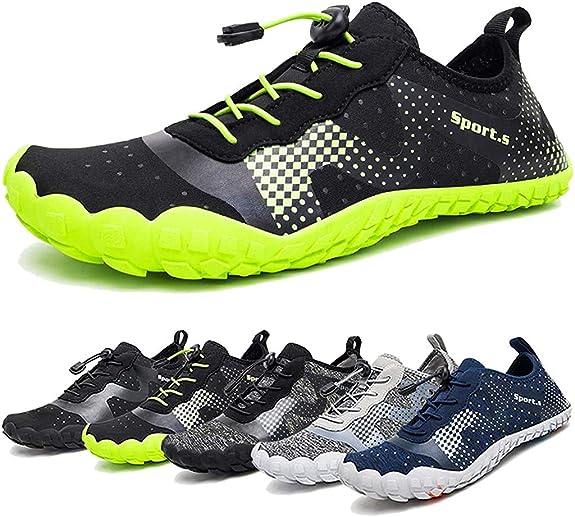
The Best Water Shoes (How To Dry Water Shoes)
Step into a world of aquatic adventure with the best water shoes by your side. Whether you’re wading through clear streams, conquering river rapids, or simply enjoying a day at the beach, the right pair of water shoes can make all the difference.
Here are the best water shoes for all your water adventures:
Product Image | Product Name | Key Features | Rating | Price |
| ||||
| ||||
| ||||
| ||||
| ||||
| ||||
| ||||
| ||||
| ||||
|
How To Get The Smell Out Of Water Shoes (How To Dry Water Shoes)
Addressing odors in water shoes is crucial, especially after extended use in wet conditions. Here are methods for effectively eliminating odors from water shoes:
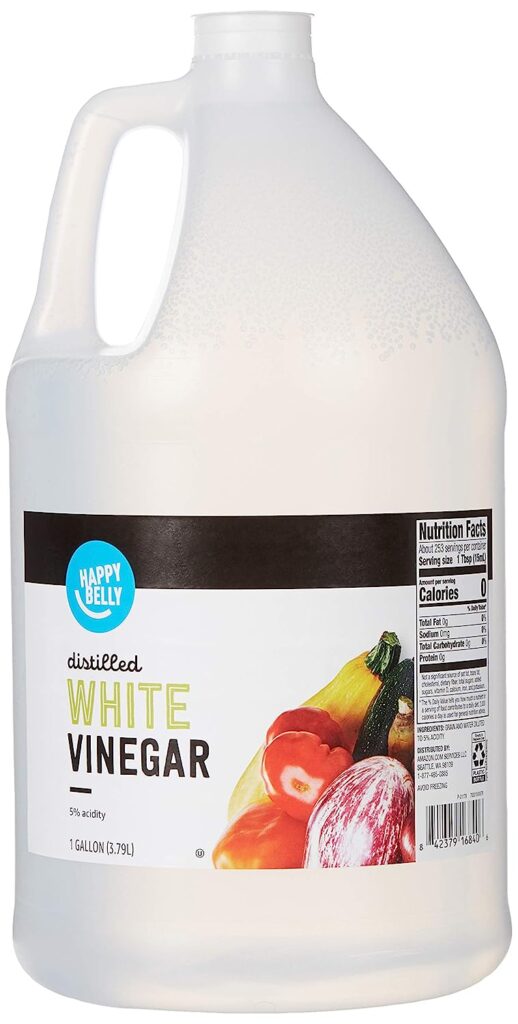
1. Baking Soda
- Baking soda is a natural deodorizer and moisture absorber. Start by ensuring your water shoes are completely dry.
- Sprinkle a generous amount of baking soda into the shoes, coating the insoles and interior. You can also place an open container of baking soda inside each shoe.
- Let the baking soda sit in the shoes overnight or for at least a few hours. This allows it to absorb moisture and neutralize odors.
- Afterward, shake out or vacuum the excess baking soda from the shoes. They should smell fresher and more pleasant.
2. Activated Charcoal
- Activated charcoal is another excellent natural odor absorber. Ensure your water shoes are dry before using this method.
- Place activated charcoal sachets or loose charcoal pieces inside each shoe. Activated charcoal effectively absorbs odors, moisture, and impurities.
- Allow the charcoal to sit in the shoes for several hours or overnight.
- Remove the charcoal before wearing the shoes again. Activated charcoal can be reused by placing it in the sun to “recharge” its odor-absorbing properties.
3 White Vinegar
- White vinegar can effectively help eliminate odors from water shoes.
- Remove the insoles and laces from your shoes.
- Mix equal parts white vinegar and water in a spray bottle.
- Spray the inside and outside of your shoes with the vinegar solution.
- Allow the shoes to dry completely before putting them on.
3. Shoe Deodorizers
- Specialized shoe deodorizers are designed to combat odors effectively. These products come in various forms, including sprays, sachets, and insoles.
- Spray deodorizers directly into the water shoes or place sachets or insoles inside.
- Follow the product’s instructions for the recommended duration, typically a few hours to overnight.
- Shoe deodorizers are formulated to eliminate odors and leave a pleasant scent.
4. Freezing
- Freezing can help kill odor-causing bacteria by slowing their activity.
- Ensure your water shoes are dry before using this method.
- Place the shoes in a sealed plastic bag or wrap them in plastic to prevent them from coming into direct contact with other items in your freezer.
- Leave the shoes in the freezer for several hours or overnight.
- Remove the shoes and let them thaw. As the bacteria are killed or neutralized, the odor should dissipate.
5. Sunlight and Fresh Air
- Sunlight and fresh air can naturally help eliminate odors by drying out the shoes and killing odor-causing bacteria.
- Place your water shoes outdoors in direct sunlight for a few hours. Ensure they are completely dry before doing this.
- The combination of UV rays and fresh air can refresh the shoes and help eliminate odors.
Select the method that works best for you and your water shoes. Combining a few techniques, such as using baking soda or activated charcoal with periodic sun exposure, can help maintain odor-free water shoes, ensuring they remain comfortable and pleasant to wear.
RELATED:Are Water Shoes Necessary – Unlock the Secrets And Get the Facts
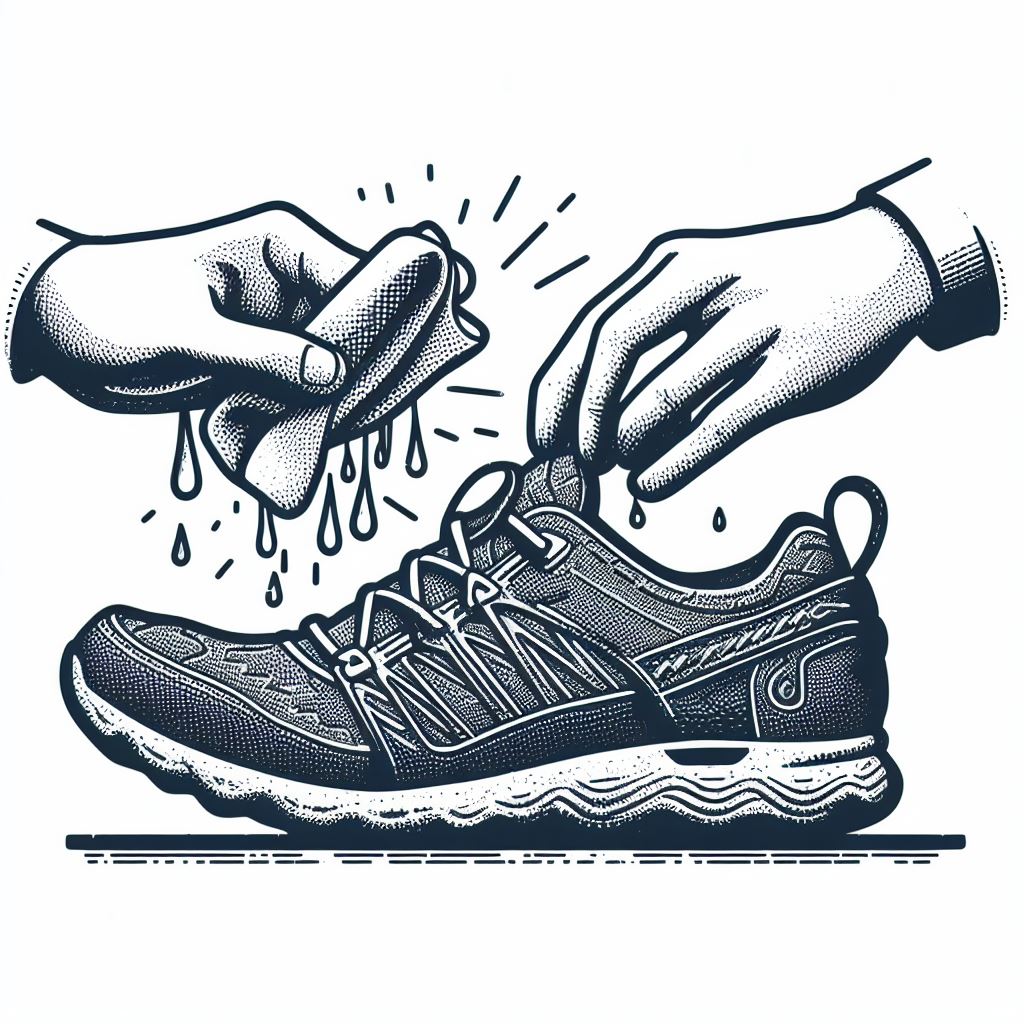
How To Prevent The Growth Of Mold And Mildew In Water Shoes
Preventing the growth of mold and mildew in water shoes is essential to maintain their condition and hygiene. Here’s how to prevent these issues and ensure your water shoes stay fresh:
1. Proper Drying
The most effective way to prevent mold and mildew is to ensure your water shoes are thoroughly dry after each use.
Remove any moisture by following the appropriate drying method, such as air drying, using absorbent materials, or a shoe dryer.
Pay special attention to the insoles and crevices where moisture can hide.
2. Sunlight and Ventilation
Sunlight and fresh air are natural enemies of mold and mildew. Whenever possible, place your water shoes in direct sunlight.
After wearing your shoes, leave them outdoors in the sun for a few hours to ensure any remaining moisture evaporates.
Proper ventilation is also crucial. Store your water shoes in a well-ventilated area, allowing air to circulate freely around them.
3. Proper Storage
When storing your water shoes, ensure they are completely dry. Wet shoes stored in an enclosed space can quickly become breeding grounds for mold.
Avoid sealing them in airtight bags or containers unless they are fully dry, as this can trap moisture.
Opt for mesh or breathable shoe bags, which allow air circulation while protecting the shoes from dust and debris.
4. Use Moisture-Absorbing Materials
Place moisture-absorbing materials like silica gel packets or activated charcoal inside your shoes when storing them. These materials will help maintain a dry environment within the shoes and prevent mold growth.
5. Regular Cleaning
Keep your water shoes clean to prevent the growth of mold and mildew. After each use, rinse them thoroughly to remove salt, sand, or any debris that can provide a fertile ground for mold.
Periodically clean the insoles and interiors with a mixture of mild soap and water. Make sure they are fully dry before storing them.
6. Rotation
If you frequently use water shoes, consider rotating between multiple pairs. This allows each pair to dry thoroughly between uses and reduces the risk of mold and mildew.
7. Anti-Microbial Products
Some specialized anti-microbial products are designed to inhibit the growth of mold and mildew. These can be applied to the interior of your water shoes and can provide an additional layer of protection.
Common Mistakes To Avoid When Drying Water Shoes
Avoiding common mistakes when drying water shoes is essential to ensure they maintain their performance, shape, and longevity. Here are some typical mistakes people make and how to prevent them:
1. Overheating in a Dryer: One of the most common mistakes is subjecting water shoes to high temperatures in a dryer. Excessive heat can cause materials like rubber, neoprene, or mesh to warp, crack, or lose their structural integrity.
To prevent this mistake, always use the lowest heat or air-dry setting on your dryer when using this method. Check the shoes periodically to make sure they aren’t getting too hot and remove them as soon as they’re dry.
2. Using Excessive Heat: Similar to dryer-related issues, using direct heat sources like radiators or open flames can lead to damage. Excessive heat can cause shrinking, melting, or weakening of materials.
To prevent this mistake, avoid placing your water shoes near radiators, campfires, or other direct heat sources. Opt for gentler drying methods, such as air drying or using absorbent materials.
3. Not Allowing Proper Ventilation: Inadequate ventilation during the drying process can trap moisture inside the shoes, leading to a breeding ground for mold and unpleasant odors. To avoid this mistake, always choose well-ventilated drying areas, preferably outdoors or in a room with good airflow.
Using a drying rack with proper ventilation or placing shoes near an open window can help. Ensure the shoes are not left in an enclosed, humid space.
4. Neglecting Cleaning: Neglecting to clean your water shoes before drying can trap dirt and bacteria, making them even smellier. To prevent this mistake, rinse and clean your water shoes thoroughly after use, removing sand, salt, or any debris. Allow them to air dry.
5. Ignoring Shoe Materials: Different water shoes are made of various materials, such as neoprene, mesh, or rubber. Failing to consider the material of your shoes can lead to improper drying techniques. To prevent this mistake, understand the specific requirements for your shoe type.
For example, neoprene shoes may benefit from extra care to maintain their flexibility, while mesh shoes require thorough drying to prevent mold growth.
6. Rushing the Drying Process: Impatience can lead to mistakes. Rushing the drying process with high heat or inadequate drying time can result in unsatisfactory results. To prevent this mistake, plan your water shoe drying ahead of time.
Allow sufficient time for proper drying, especially if you’re air drying or using absorbent materials.
How To Maintain Water Shoes For Long-Term Use (How To Dry Water Shoes)
Maintaining water shoes is essential for their longevity and continued performance. Here’s some advice on how to keep your water shoes in excellent condition for long-term use:
1. Regular Cleaning
After each use, rinse your water shoes with clean water to remove salt, sand, and other debris that can damage the materials and cause odors.
Use a soft brush or cloth to gently scrub away dirt and grime. Be careful not to use abrasive materials that could damage the fabric or stitching.
2. Deep Cleaning
Periodically, give your water shoes a thorough cleaning. Prepare a mixture of mild soap and water, then gently scrub the shoes with a soft brush or cloth.
Pay attention to the insoles, especially if they are removable. Clean them separately to eliminate any odor or residue.
3. Drying After Use
Proper drying is key to preventing odors and the growth of mold and mildew, as discussed earlier. Make sure your water shoes are completely dry before storing them.
4. Sun Exposure
Whenever possible, expose your water shoes to direct sunlight. Sunlight can naturally kill bacteria, fungi, and help eliminate odors. Don’t do this always as the sun’s heat can impact the shoes.
5. Avoid Rough Surfaces
Be mindful of where you walk when wearing your water shoes. Avoid rough or sharp surfaces that could puncture or damage the soles or fabric.
6. Protect the Soles
Depending on the terrain and activities you use your water shoes for, consider using sole protectors or guard strips to extend the lifespan of the soles.
7. Rotate Pairs
If you have multiple pairs of water shoes, rotate their use to allow each pair to dry and rest between wears. This reduces wear and tear on any single pair.
8. Repair Promptly
If you notice any damage, such as loose stitching or sole separation, address it promptly. Repairing minor problems early can inhibit them from becoming more significant issues.
9. Avoid Machine Washing
While some water shoes may be machine-washable, it’s generally better to hand wash or spot clean them to avoid unnecessary wear and tear. If you must use a washing machine, follow this instructions for the right cleaning way with a washing machine.
10. Store Properly
Store your water shoes in a cool, dry place with good ventilation. Avoid sealing them in airtight containers or bags unless they are completely dry.
11. Replace Insoles
If your water shoes have removable insoles, consider replacing them periodically to maintain comfort and odor control.
12. Follow Manufacturer’s Care Instructions
Pay attention to any care guidelines provided by the manufacturer. Different brands and models may have specific recommendations for cleaning and maintenance.
Frequently Asked Questions On How To Dry Water Shoes
How Long Does It Take To Dry Water Shoes?
The drying time for water shoes can vary depending on the drying method, shoe material, and environmental conditions. Air drying can take several hours to a full day, while using a low-heat dryer may take around 30 minutes to an hour.
Make sure the shoes are completely dry before wearing them to prevent odors and mold.
Can I Put My Water Shoes In A Washing Machine Or Dryer?
It’s generally not recommended to put water shoes in a washing machine or dryer, as these machines can damage the materials and affect the shoes’ performance. Hand washing and air drying are safer methods.
How Do I Prevent My Water Shoes From Smelling Bad?
To prevent odors, ensure your water shoes are thoroughly dry after each use. Use moisture-absorbing materials like baking soda or silica gel packets. Additionally, periodically wash and clean the insoles and interiors of your shoes to eliminate bacteria and odor-causing agents.
Can I Use A Hairdryer To Dry My Water Shoes?
Using a hairdryer on a low-heat setting can be an option for drying water shoes. However, be cautious not to overheat or damage the shoes. Ensure there’s enough distance between the shoes and the hairdryer to avoid direct contact.
What’s The Best Way To Store Water Shoes Between Uses?
Store your water shoes in a cool, dry place with good ventilation. Avoid sealing them in airtight containers or bags unless they are completely dry. You can use breathable shoe bags or mesh pouches to protect them from dust while allowing air circulation.
My Water Shoes Are Losing Their Grip. What Can I Do?
If your water shoes are losing their traction, consider cleaning the soles to remove dirt and debris that may be affecting their grip. If the soles are excessively worn, you may need to replace the shoes or consider sole protectors.
Can I Use Bleach To Remove Odors From My Water Shoes?
Using bleach is not recommended, as it can damage the materials and affect the shoe’s color. Stick to milder cleaning solutions like soap and water for odor removal.
Should I Size Up When Buying Water Shoes For Better Drying And Comfort?
Water shoes should generally fit snugly to prevent water from entering. Sizing up for better drying is not necessary, as proper drying techniques should be used to maintain comfort and hygiene.
My Water Shoes Have Mesh Fabric. How Should I Dry Them To Prevent Damage?
Drying mesh water shoes is similar to other types. Use a gentle drying method like air drying or absorbent materials, making sure to keep them away from direct heat sources to prevent damage to the mesh.
How Can I Remove Stubborn Stains From My Water Shoes?
For stubborn stains, you can try a mixture of mild soap and water with gentle scrubbing. Avoid using harsh chemicals or abrasive materials that could further damage the shoes.
The Bottom Line On How To Dry Water Shoes
Mastering how to dry water shoes is your key to ensuring their longevity, comfort, and odor-free water shoes. By following the simple yet effective methods discussed in this guide, you can confidently step into your next water adventure with dry and fresh footwear.
Don’t let dampness and odors hold you back – take charge of your water shoes’ care and enjoy countless aquatic escapades with confidence!










